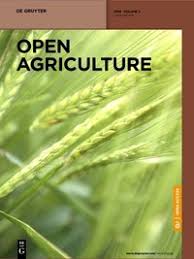Sufficient sweetpotato (Ipomoea batatas (L.) Lam) pre-basic seed at the start of the “seed” value chain is critical and often a bottleneck in the production of sweetpotato in Sub-Saharan Africa. Predominantly, pre-basic seed is multiplied in screenhouse using the conventional soil substrate method which is costly, is untenable, and achieves sub-optimal yields. The sandponics system is a better alternative for sweetpotato pre-basic seed multiplication in the screenhouse attributed to increased yields and cost-effectiveness. This experiment compared sweetpotato yield- and growth-related traits of planting materials sourced from the sandponics system with conventional soil substrate planting materials for four genotypes when grown in the field. A randomized complete block design was used with three replicates. Results showed a significant difference (p ≤ 0.05) between sources of planting materials and among genotypes for the measured traits. The interaction of source of planting materials and genotype was significant (p ≤ 0.05) for harvest index. Vine survival, storage root yield, number of storage roots per plant, and vine yield were higher by 4.1%, 24%, 27%, and 24%, respectively, in favor of planting materials sourced from the sandponics system. Sandponically multiplied planting materials showed superior performance for yield and most of the measured growth-related traits to planting materials multiplied by the conventional soil substrate method.
Yield potential of sandponically produced sweetpotato (Ipomoea batatas (L.) Lam) pre-basic seed for selected genotypes
Citation: Makokha, P.; Ssali, R.T.; Wanjala, B.W.; Rajendran, S.; McEwan, M.; Low, J.W. 2020. Yield potential of sandponically produced sweetpotato (Ipomoea batatas (L.) Lam) pre-basic seed for selected genotypes. Open Agriculture. ISSN 2391-9531. Published online 09Jun2020.
2020-06-16
BREEDING, SEED SYSTEMS, SWEETPOTATO AGRI-FOOD SYSTEMS, SWEETPOTATOES
Africa, Western Africa
Kenya
journal_article

